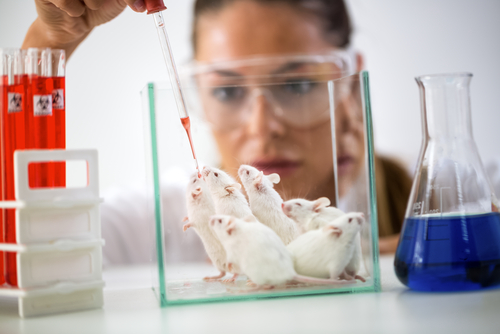Asthma Medicine Salmeterol Improves Effectiveness of Gene Therapy for Pompe Disease, Mouse Study Suggests

Salmeterol, a vasodilator approved for the treatment of asthma and chronic obstructive pulmonary disease (COPD), has shown potential to improve the effectiveness of gene therapy for Pompe disease.
Studies in mice demonstrated that administering salmeterol as an add-on treatment to gene therapy can significantly reduce the amount of toxic glycogen accumulated in muscles due to Pompe disease, compared to gene therapy alone.
This finding suggests that repurposing the use of this approved medicine may provide meaningful long-term clinical benefits and open new avenues for developing strategies to improve the quality of life of patients with Pompe disease.
These preclinical data were discussed at the upcoming 2019 annual meeting of the American Society of Gene & Cell Therapy (ASGCT) held April 29-May 2 in Washington, D.C.
The oral presentation, “Salmeterol with Liver Depot Gene Therapy Reversed Biochemical and Autophagic Abnormalities of Skeletal Muscle in Pompe Disease,” was presented by Sang-oh Han, PhD, who is a researcher at Duke University Medical School and lead author of the study. (Editor’s note: Study can be found on page 16 of presentation.)
Pompe disease is a rare, inherited, lysosomal disorder caused by genetic mutations on the GAA gene, which provides instructions for generating the acid alpha-glucosidase enzyme. Impaired activity of this enzyme leads to the accumulation of a sugar molecule, called glycogen, inside cells.
Given the genetic nature of Pompe disease, researchers have been focused on the development of gene therapies that can deliver a normal, functional version of GAA enzyme to affected tissues in order to reverse the effects of the damaged version.
Although this strategy has shown therapeutic potential, it still presents some limited effectiveness. This is due, in part, to the reduced uptake of the gene therapy products by muscle cells.
For muscle cells to receive the healthy GAA version, they need to have the cation-independent mannose-6-phosphate receptor (CI-MPR). However, this receptor is often missing in these cells, which will compromise the effectiveness of gene therapies.
Salmeterol, a long-acting selective β2 receptor agonist, has shown ability to increase the availability of CI-MPRs in muscle cells. Based on this, researchers from Duke University School of Medicine decided to explore the ability of salmeterol to enhance the effectiveness of gene therapies for Pompe disease.
Using mice that had been genetically engineered to lack GAA enzyme, the team administrated previously tested safe viral vectors carrying the human GAA gene in combination with salmeterol.
With this strategy, they were able to significantly reduce the levels of glycogen in the mice’s leg muscles in comparison with the gene therapy alone. In addition, the mice showed meaningful improvements in their capacity to walk and maintain balance, as well as muscle strength, following the combo treatment.
Overall, administration of salmeterol prevented many of the cellular damaging changes that had been described previously in muscle cells as a consequence of Pompe disease.
Supported by these findings, the researchers believe that “salmeterol could be further developed as adjunctive therapy to improve the efficacy of liver depot gene therapy for Pompe disease.”






